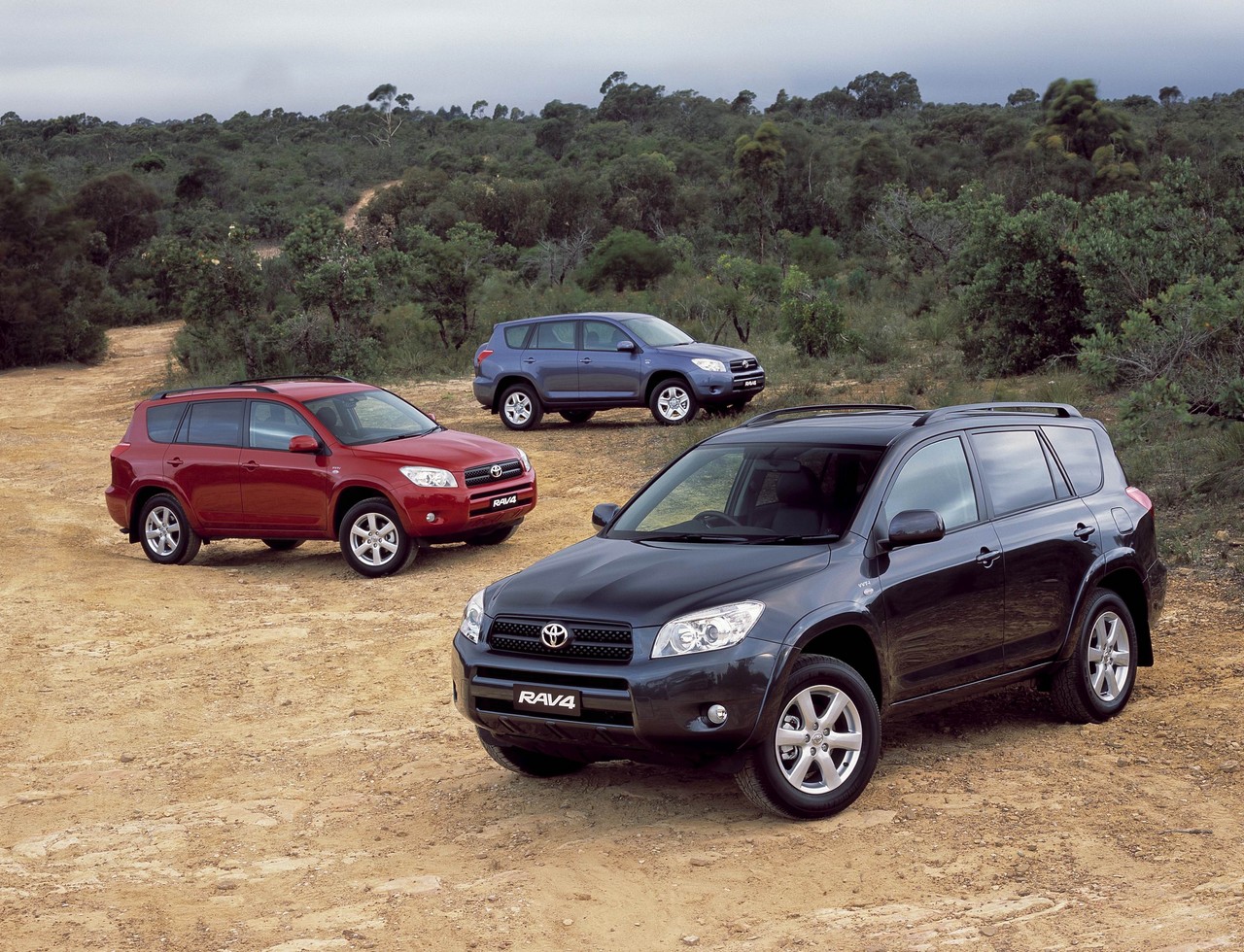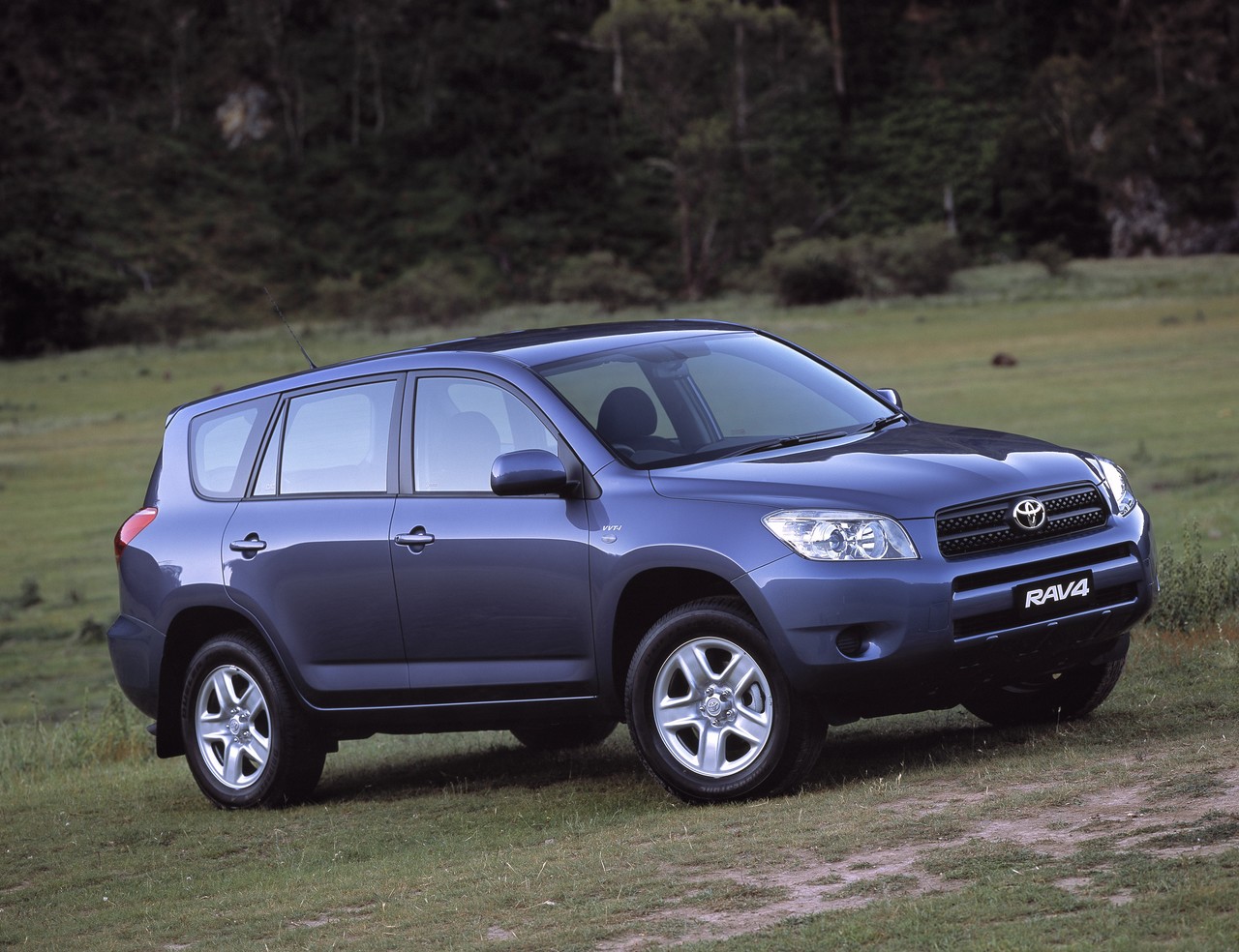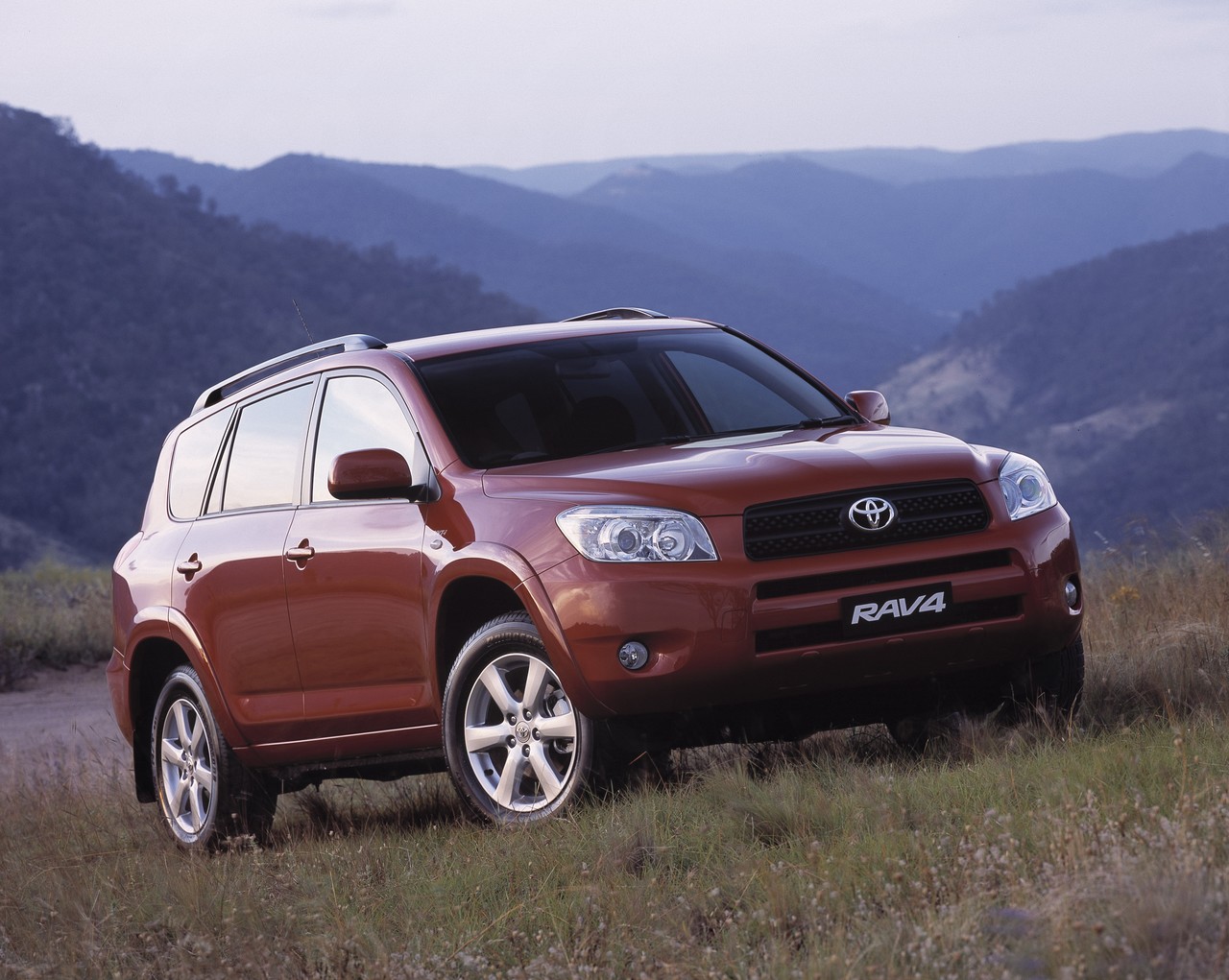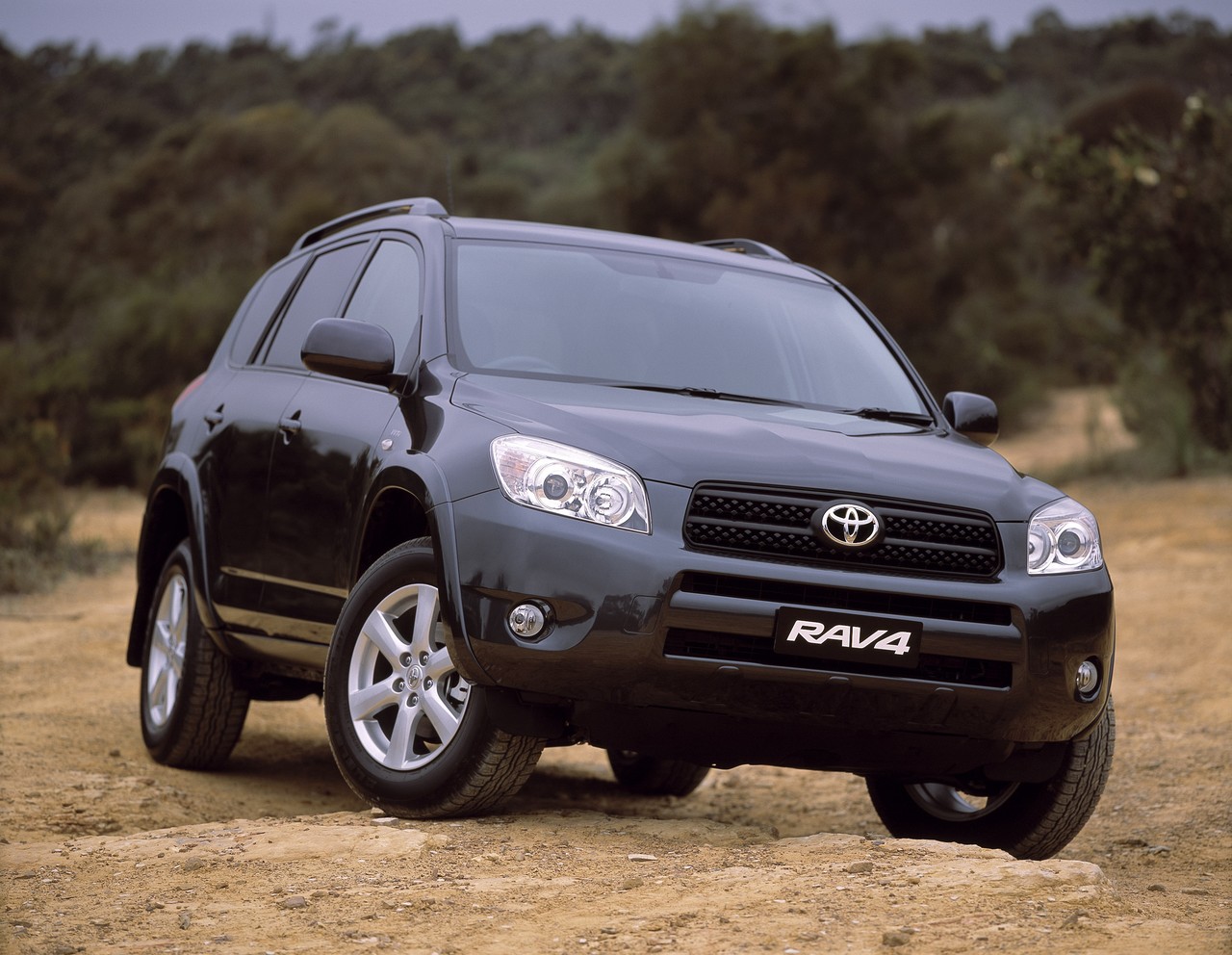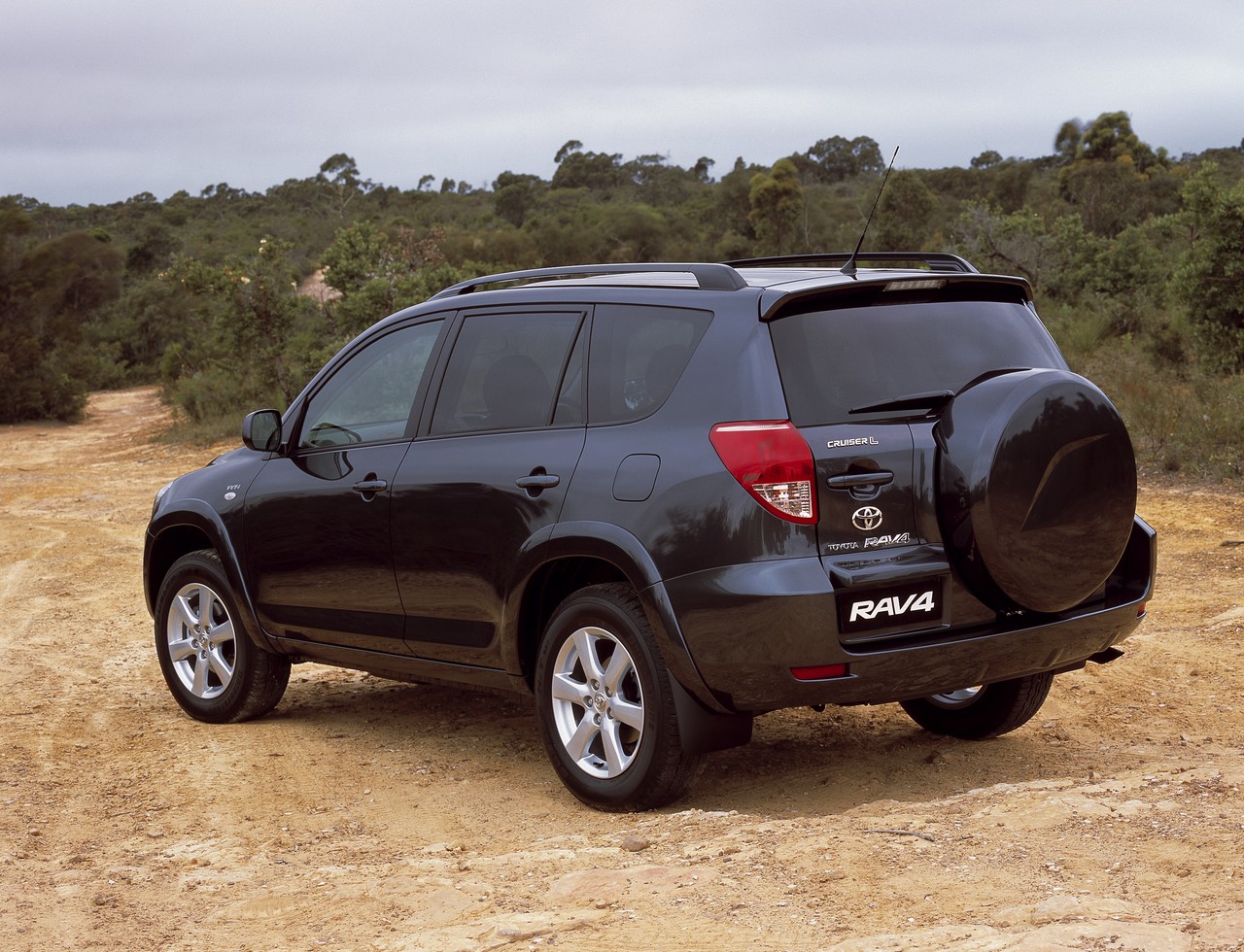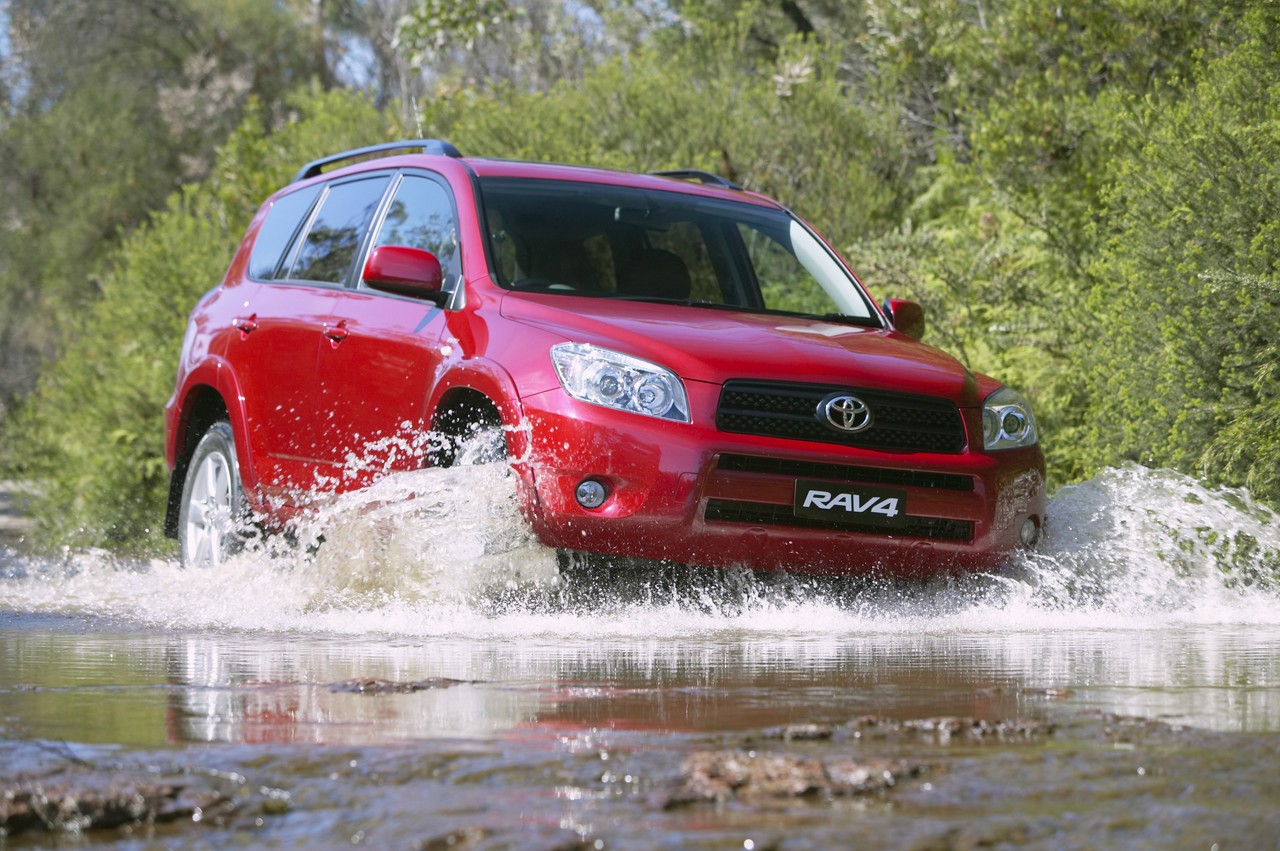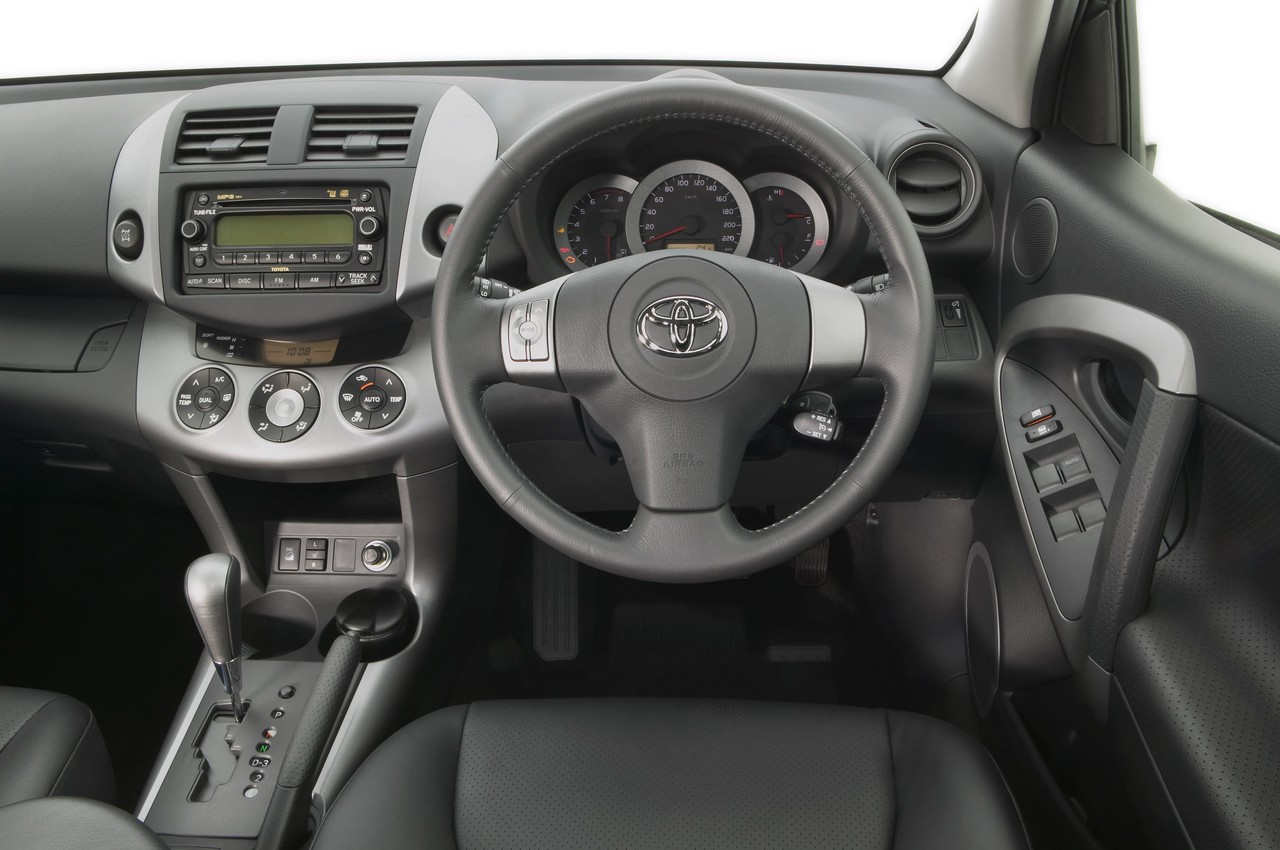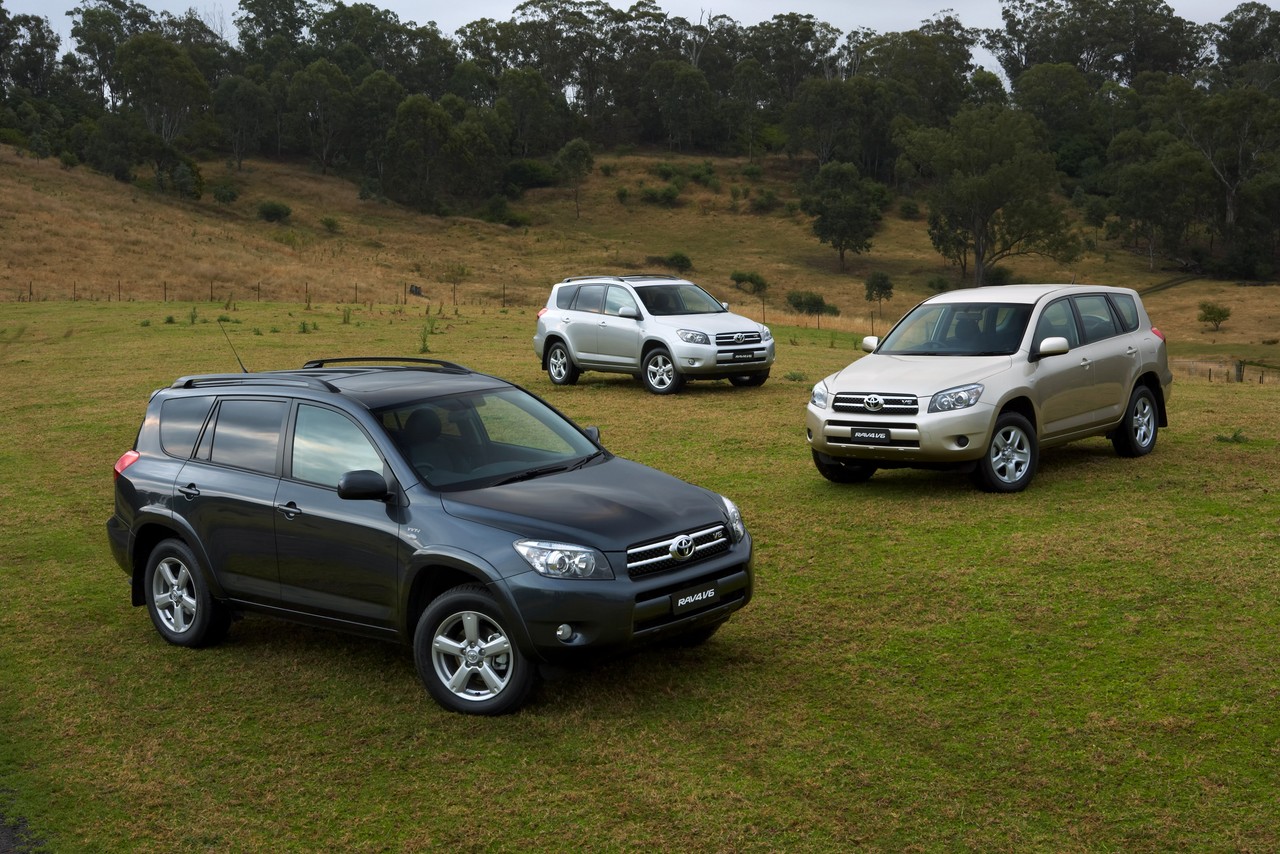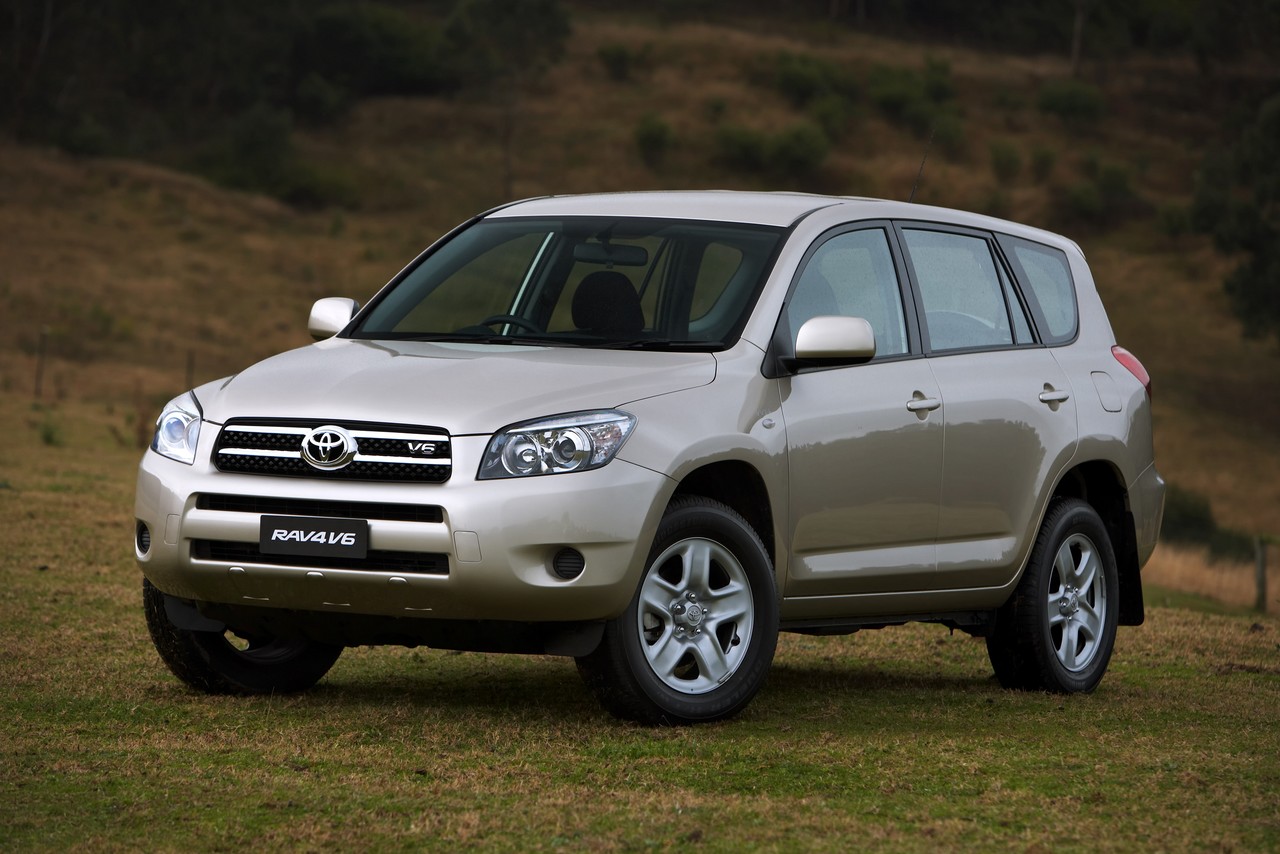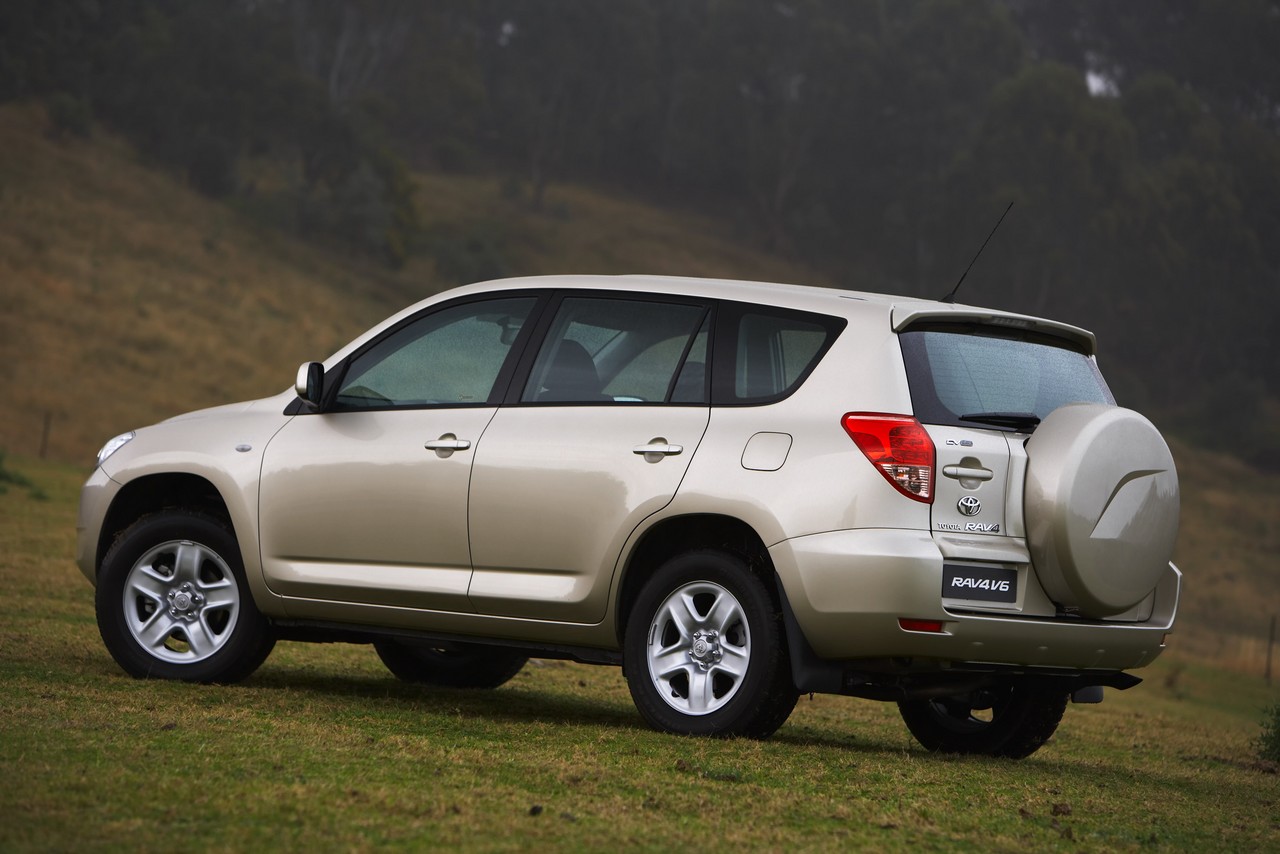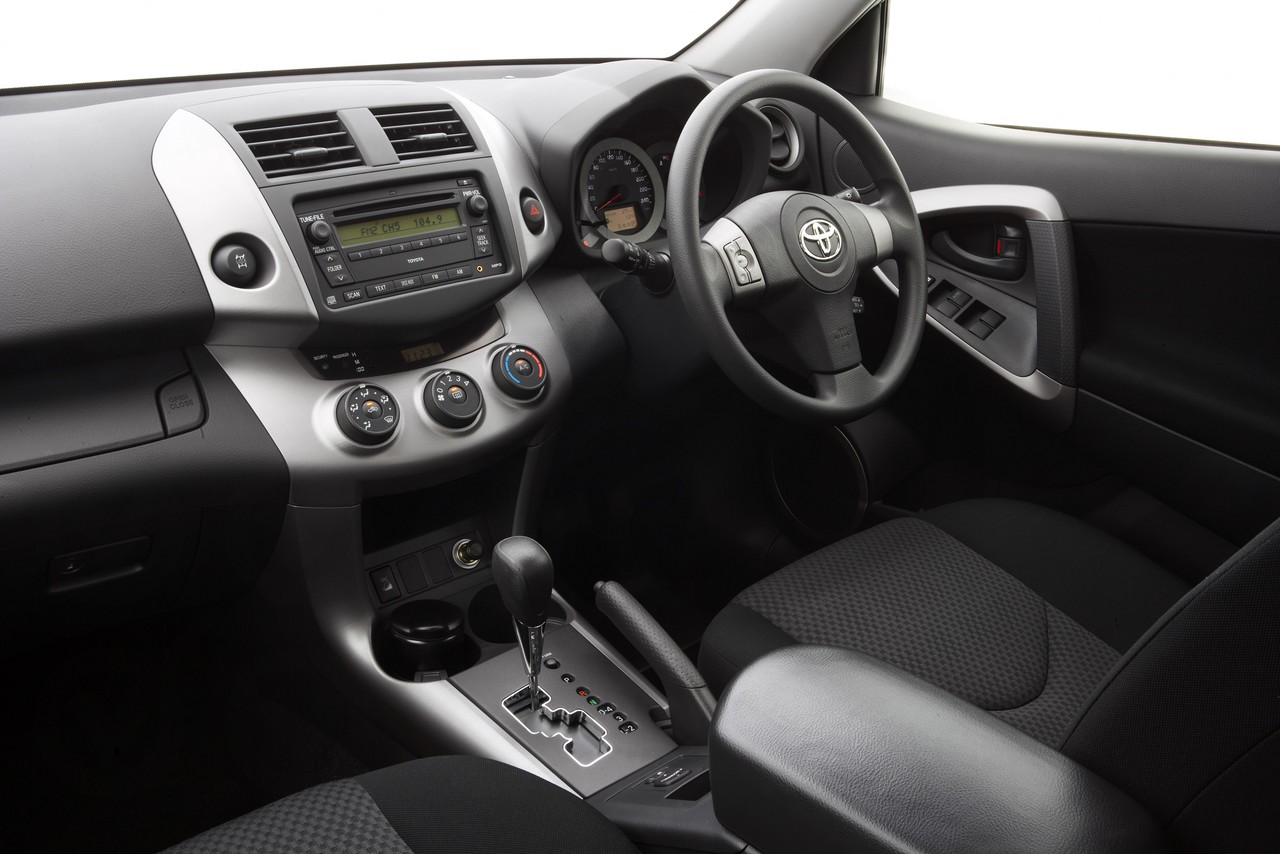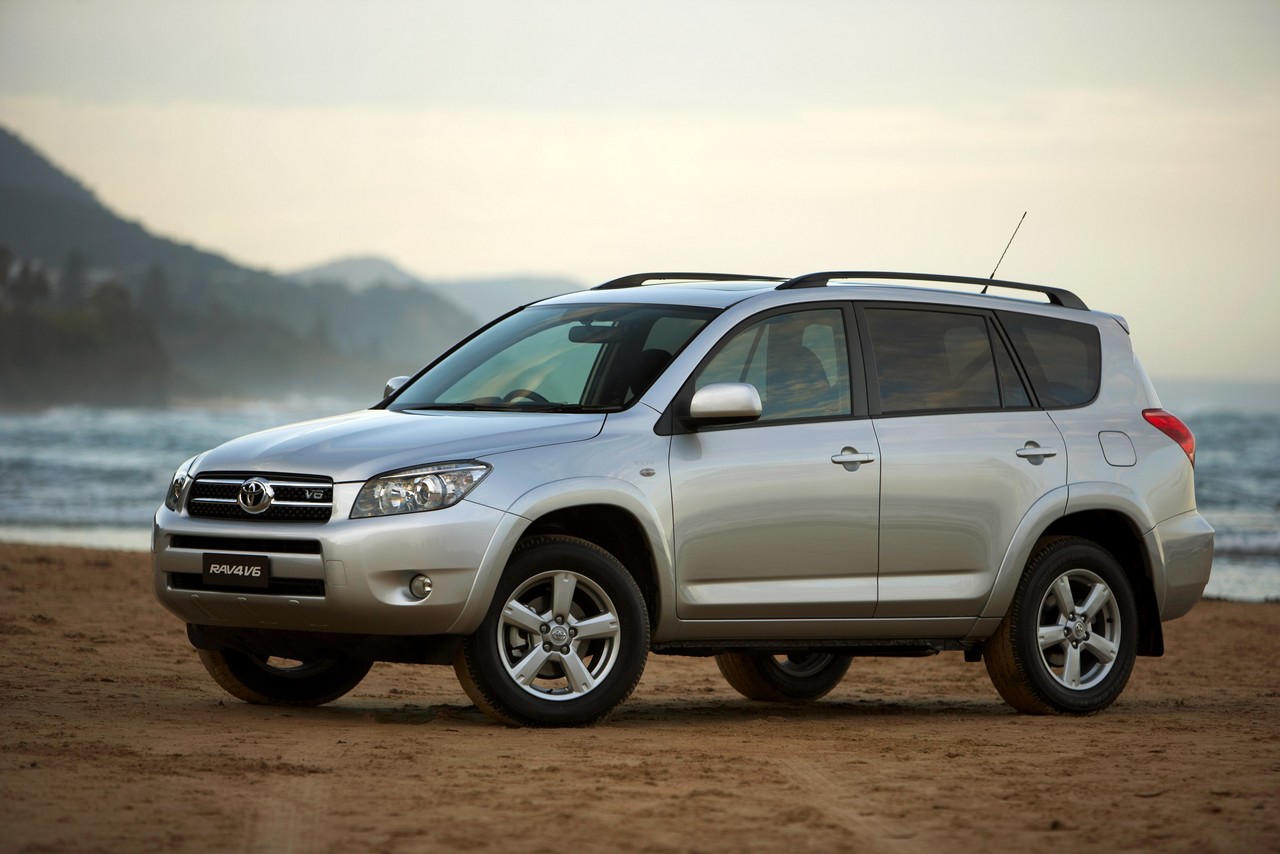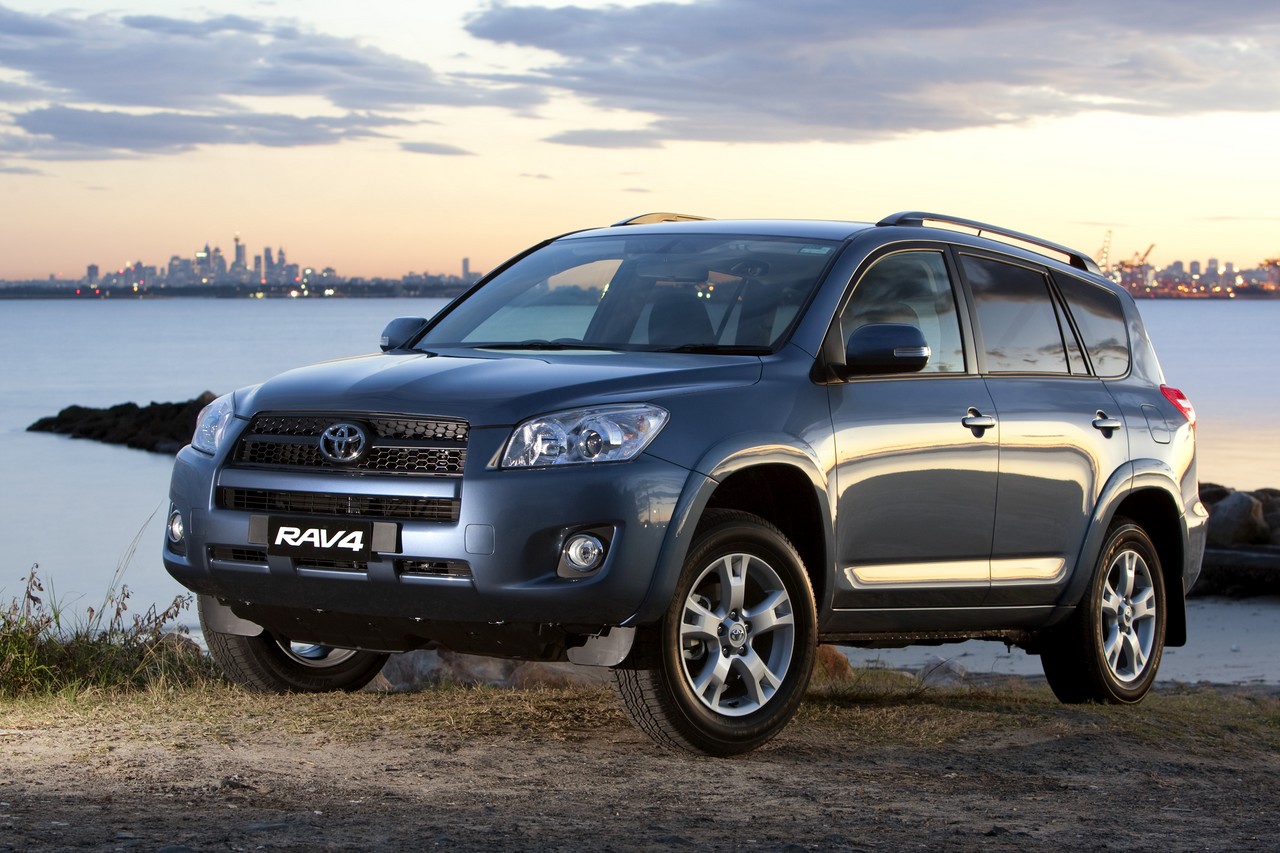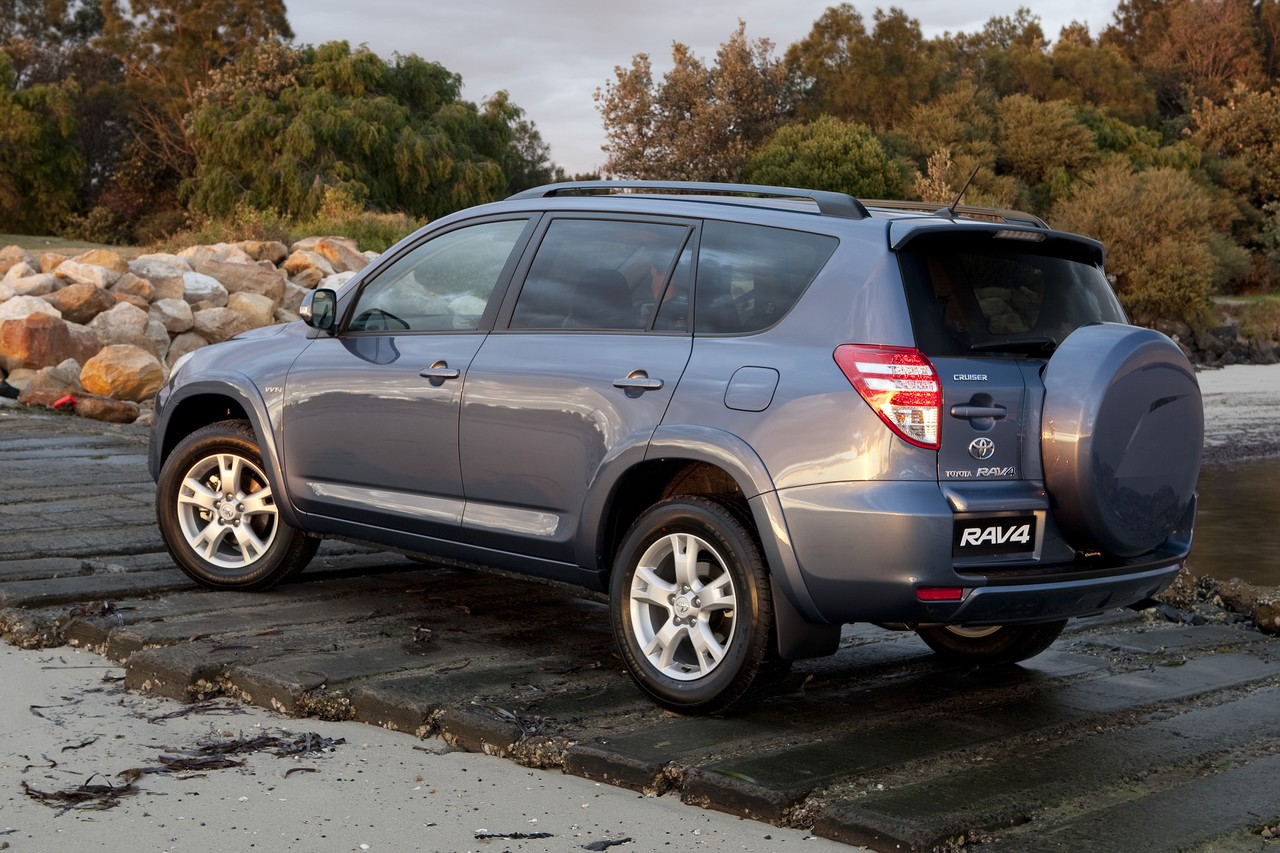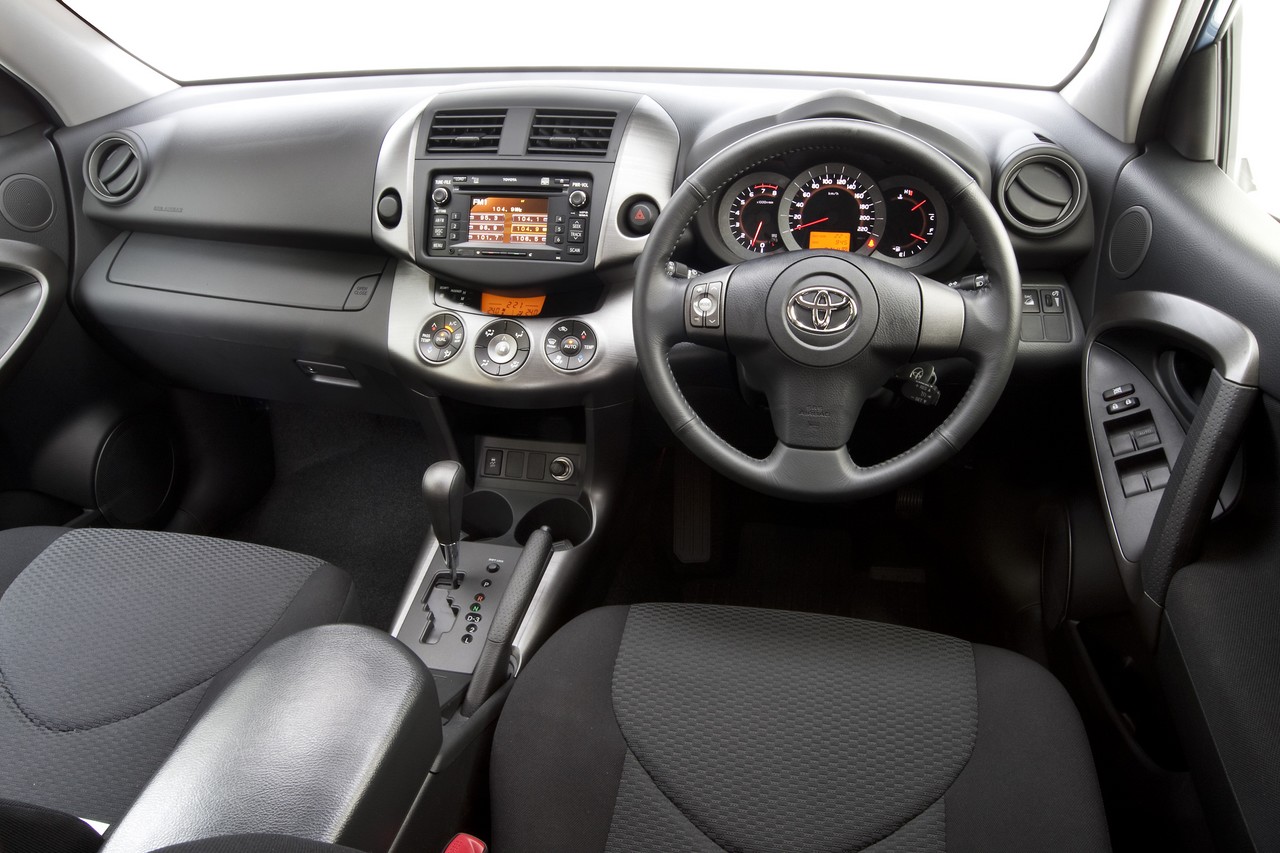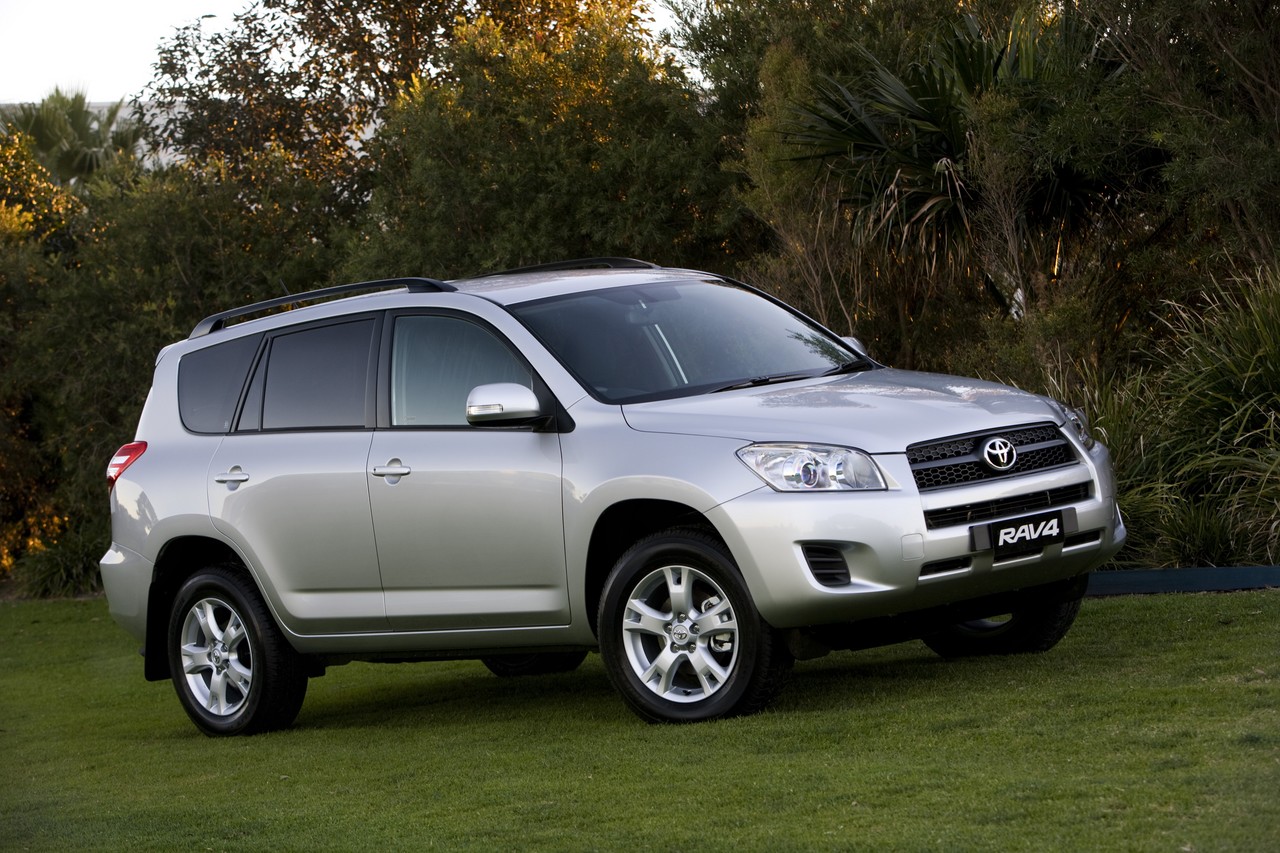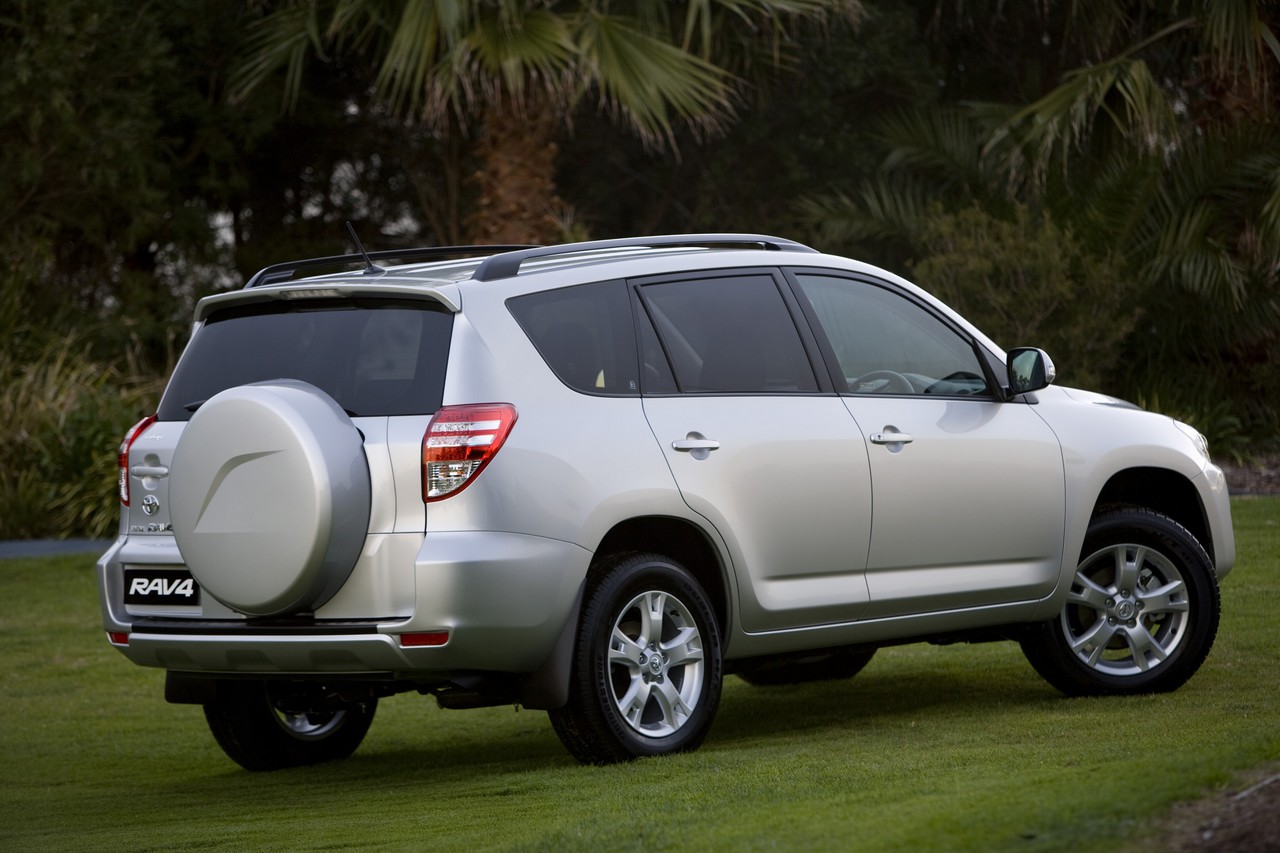
- Flexible 2.4-litre 2AZ-FE petrol engine
- Powerful and refined 3.5-litre 2GR-FE V6 petrol engine
- Spacious and practical interior
- Generally comfortable ride…
- … but rear suspension struggles with uneven surfaces
- Body roll when cornering
- Light steering lacks feel
- Upright driving position and steering wheel doesn’t adjust for reach
- Cabin lacks sound insulation
- Oil consumption concerns for 2AZ-FE engine
Review: Toyota XA30.I RAV4 (2006-08)
Overview
Released in January 2006, the Toyota XA30 Series I (XA30.I) RAV4 was a five-door, all-wheel drive SUV. Manufactured in Japan, the RAV4 was initially powered by a 2.4-litre four-cylinder engine that was mated to either a four-speed automatic or five-speed manual transmission. In October 2007, however, a 3.5-litre V6 engine – that was mated to a five-speed automatic transmission – was introduced.
2AZ-FE and 2GR-FE engines
Of the engines,
- The 2.4-litre 2AZ-FE four-cylinder petrol engine had an aluminium block and cylinder head, double overhead camshafts, four valves per cylinder, variable intake valve timing (Toyota’s ‘VVT-i’), twin counter-rotating balance shafts, electronic throttle control and a compression ratio of 9.6:1; and,
- The 3.5-litre 2GR-FE V6 petrol engine had an aluminium block and cylinder head, double overhead cams per cylinder bank, four valves per cylinder, dual variable valve timing (which controlled phasing on intake and exhaust camshafts), an Acoustic Control Induction System (ACIS) which increased the length of the induction tract for low-rev torque and shortened the tract for top-end power, and a compression ratio of 10.8:1.
Dimensions and body
Compared to the five-door XA20 RAV4 , the XA30 RAV4 was 405 mm longer (at 4600 mm), 30 mm wider (1815 mm), 25 mm taller (1730 mm) and had a 170 mm longer wheelbase (2660 mm). Furthermore, the monocoque chassis achieved a 76 per cent increase in rigidity and the coefficient of drag decreased to 0.34 Cd (previously 0.35 Cd).
Suspension
The XA30 RAV4 had MacPherson strut front suspension and double wishbone rear suspension.
| Engine | Trans. | Variant | Years | Peak power | Peak torque |
|---|---|---|---|---|---|
| 2.4-litre petrol I4 (2AZ-FE) |
4sp auto, 5sp man. |
CV, Cruiser, Cruiser L |
2006-08 | 125 kW at 6000 rpm | 224 Nm at 4000 rpm |
| 3.5-litre petrol V6 (2GR-FE) |
5sp auto | CV6, SX6, ZR6 |
2007-08 | 201 kW at 6200 rpm | 333 Nm at 4700 rpm |
AWD system
The XA30 RAV4 was fitted with on-demand all-wheel drive system with an electromagnetic centre differential. In normal conditions, torque was directed to the front wheels though this could be adjusted according to inputs such as longitudinal and lateral acceleration, steering wheel angle, throttle position, engine revs and relative wheel speeds. As such, up to 45 per cent of the engine’s torque could be directed to the rear wheels if required. The centre differential could also be locked for a 50:50 front:rear torque split for speeds up to 40 km/h.
Safety equipment
Safety equipment on the entry-level RAV4 CV included dual front airbags, ABS, electronic brake force distribution, brake assist and front seatbelts with pretensioners and load limiters.
The RAV4 Cruiser, Cruiser L, CV6, SX6 and ZR6 were further equipped with front side airbags, full-length curtain airbags (i.e. for front and rear occupants), electronic stability control, traction control and hill start assist; automatic models were also fitted with downhill assist.
ANCAP crash testing
In ANCAP crash testing , a 2006 RAV4 with a 2.4-litre engine – and equipped with dual front airbags – received a four star adult occupant protection rating with a score of 29.94 out of 37. In the frontal offset impact test, protection from serious leg injury was weak for the driver. In the side impact test, a default score of 16 out of 16 was awarded.
Features: RAV4 CV, Cruiser, SX6, L and ZR6
Standard features for the RAV4 CV and CV6 included 17-inch steel wheels, a six speaker sound system with MP3-compatible CD player, air conditioning, cruise control, 60/40 split and folding rear seats with fore/aft slide adjustment, remote central locking, power windows and mirrors, a tilt and reach adjustable steering wheel, a height adjustable driver’s seat, 12 volt power outlets, cargo cover and net and immobiliser.
The RAV4 Cruiser and SX6 were further equipped with 17-inch six-spoke alloy wheels, a six-stack CD player, dual zone climate control air conditioning, a leather-wrapped steering wheel and gearshift, illuminated footwells, privacy glass and roof rails. Beyond this, the SX6 added a sunroof.
The RAV4 Cruiser L and ZR6 also featured with leather seats, a power adjustable driver’s seat and heated front seats, while the ZR6 was distinguished by its standard satellite navigation system.
Related links
Review: Toyota XA30.II RAV4 (2008-12)
Overview
Released in October 2008, the XA30 Series II (CA30.II) RAV4 introduced improved safety equipment, features and a subtle facelift. Visually, the XA30.II could be identified by its new headlights, front fog lamps, radiator grille, bumpers, rear combination lights and alloy wheel designs, while the exterior mirrors also contained indicators. Inside, there were new driver and front passenger air vents and easier-to-read instruments.
In April 2010, the RAV4 range was expanded with the introduction of front-wheel drive CV and Cruiser variants.
| Drive | Engine | Trans. | Variant | Years | Peak power | Peak torque |
|---|---|---|---|---|---|---|
| AWD | 2.4-litre petrol I4 (2AZ-FE) |
4sp auto, 5sp man. |
CV, Cruiser, Cruiser L |
2008-12 | 125 kW at 6000 rpm | 224 Nm at 4000 rpm |
| 3.5-litre petrol V6 (2GR-FE) | 5sp auto | CV6, SX6, ZR6 |
2008-12 | 201 kW at 6200 rpm | 333 Nm at 4700 rpm | |
| FWD | 2.4-litre petrol I4 (2AZ-FE) |
4sp auto, 5sp man. |
CV, Cruiser |
2010-12 | 125 kW at 6000 rpm | 224 Nm at 4000 rpm |
Safety equipment
Compared to its XA30.I predecessor, standard safety equipment was extended to include electronic stability control, traction control and active front seat head restraints. Furthermore, the Cruiser, Cruiser L, CV6, SX6 and ZR6 were also fitted with a driver’s knee airbag.
Euro NCAP crash testing
In Euro NCAP crash testing , a 2006 RAV4 – equipped with dual front airbags, a driver’s knee airbag, front side airbags and curtain airbags – received a four star adult occupant protection rating with a score of 32.4 out of 37. In the frontal offset impact test, the airbags initially fired late due to a sensor disconnecting early in the impact – Toyota subsequently re-routed the wiring and modified the software in the control unit so that the airbags would fire earlier in the event of a disconnection. However, these changes were not applied to vehicles already sold and a revised version was tested by Euro NCAP. In the frontal offset impact, protection of the driver’s legs was marginal, with adequate protection for the driver’s chest and lower legs. In the side impact and pole tests, however, the RAV4 received maximum points.
Features
Standard features for the RAV4 Cruiser, Cruiser L, SX6 and ZR6 were extended to include automatic headlights, while the CV6 gained climate control air conditioning. Furthermore, the Cruiser L and ZR6 were fitted with an electrochromatic rear view mirror.
2009 RAV4 Edge
In August 2009, the limited-run RAV4 Edge was released. Compared to the CV, the RAV4 Edge added 17-inch alloy wheels, a six-disc CD player, USB and Bluetooth connectivity, rear parking sensors, rear privacy glass, roof rails and carpet mats.
2010 and 2011 RAV4 Altitude
In July 2010, a limited-run RAV4 Altitude model was released. Compared to the all-wheel drive CV variant, the Altitude was distinguished by its 17-inch five-spoke alloy wheels, a six-disc CD player and USB connectivity, Bluetooth mobile phone and audio streaming, rear parking sensors, leather-wrapped steering wheel and gearshift knob, rear privacy glass, silver roof rails, a silver front bumper applique and ‘Altitude’ badging.
In August 2011, another Altitude variant was released. Available in FWD and AWD models, the Altitude variant was distinguished from the CV variant by its 17-inch alloy wheels, six-disc CD player, USB connectivity, Bluetooth mobile phone connectivity and audio streaming, front fog lights, rear privacy glass and silver roof rails. Furthermore, the Altitude variant could be identified by its silver front bumper applique and ‘Altitude’ badging.
The Altitude returned again in September 2012. Available in FWD and AWD models, the Altitude variant was again based CV but distinguished by its 17-inch alloy wheels, a satellite navigation system (with 3D maps, SUNA traffic alerts and a 6.1-inch display), an SD card slot, Bluetooth mobile phone connectivity and audio streaming, front fog lights, rear parking sensors, privacy glass and silver roof rails.
Brochures
- Brochure: Toyota XA30.II RAV4 Altitude (October 2011)
- Brochure: Toyota XA30.II RAV4 Altitude (August 2012)
Related links
- Press Release: Toyota XA30.II RAV4 (October 2008)
- Press Release: Toyota XA30.II RAV4 Edge (August 2009)
- Press Release: Toyota XA30.II RAV4 Altitude (July 2010)
- Press Release: Toyota XA30.II RAV4 Altitude (August 2011)
- Press Release: Toyota XA30.II RAV4 Altitude (September 2012)
- Wikipedia.org: Toyota XA30 RAV4
